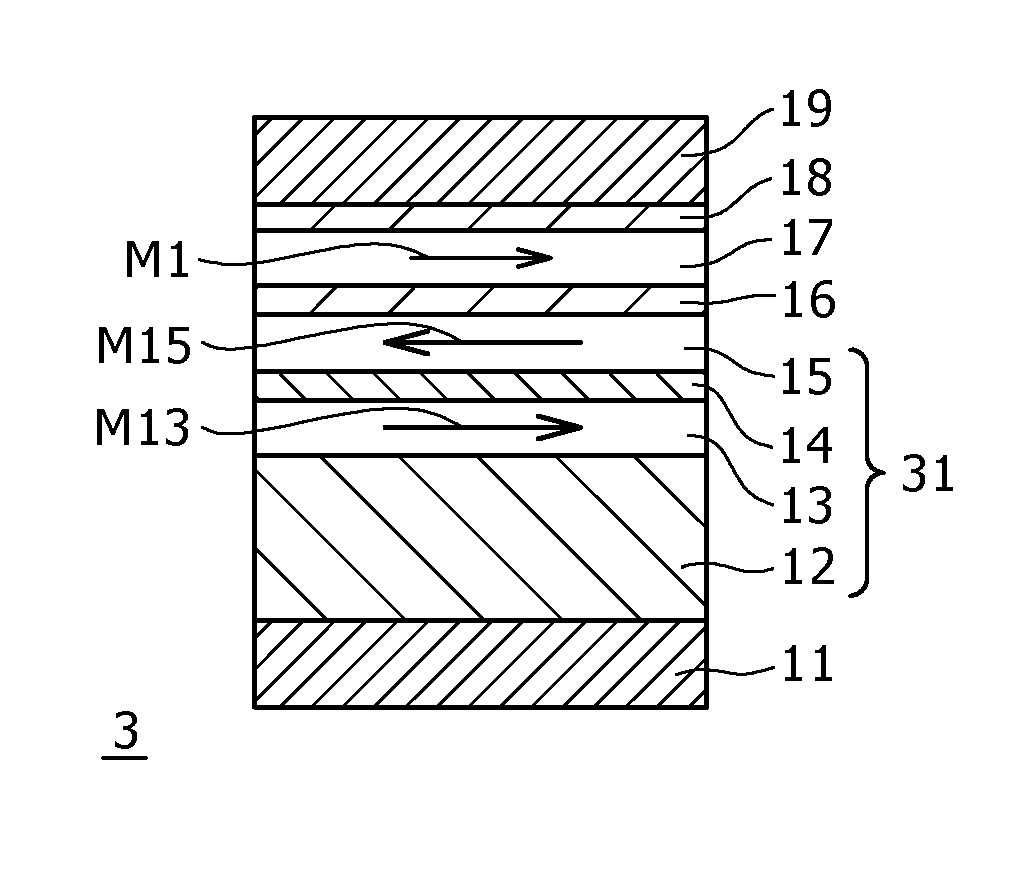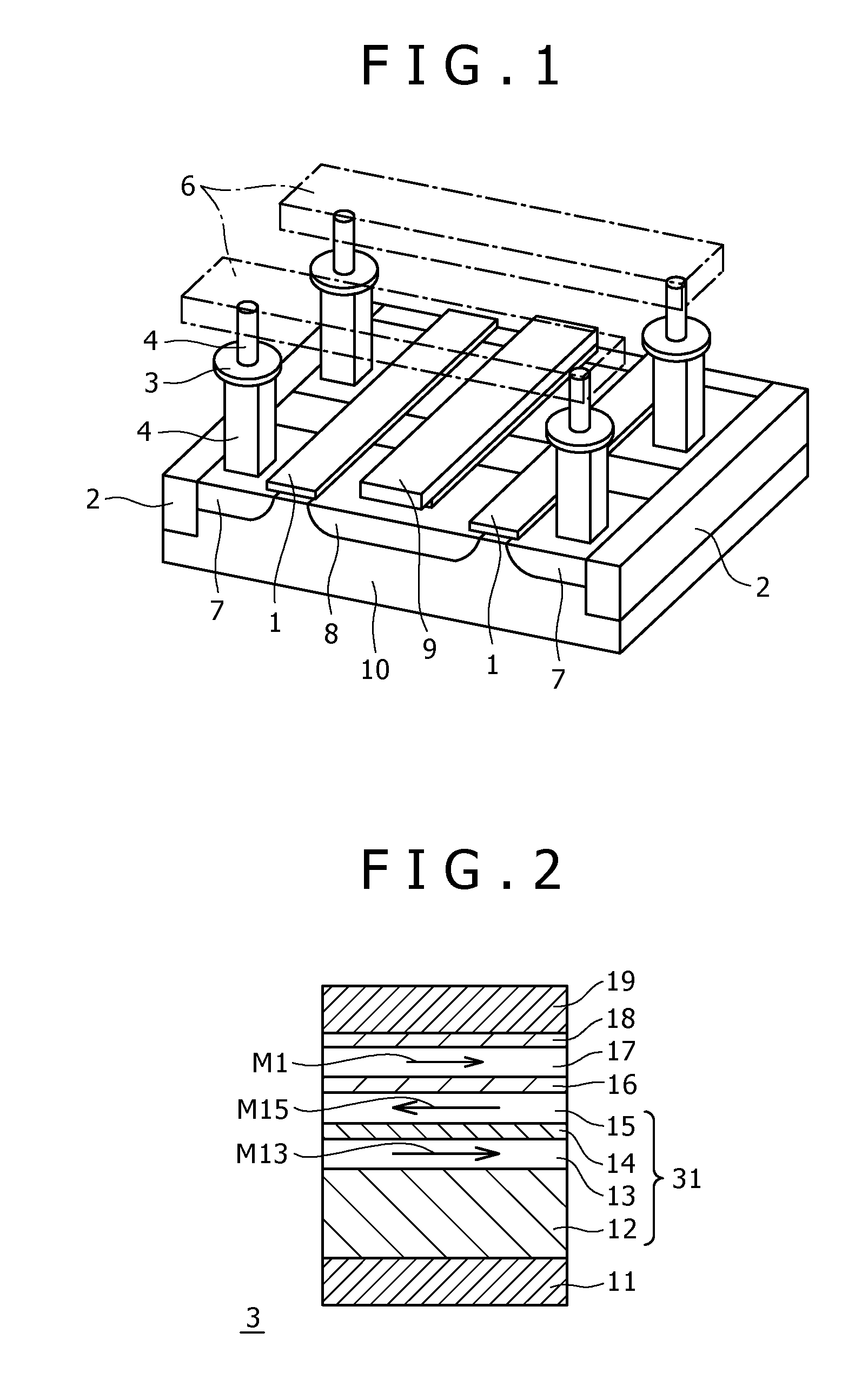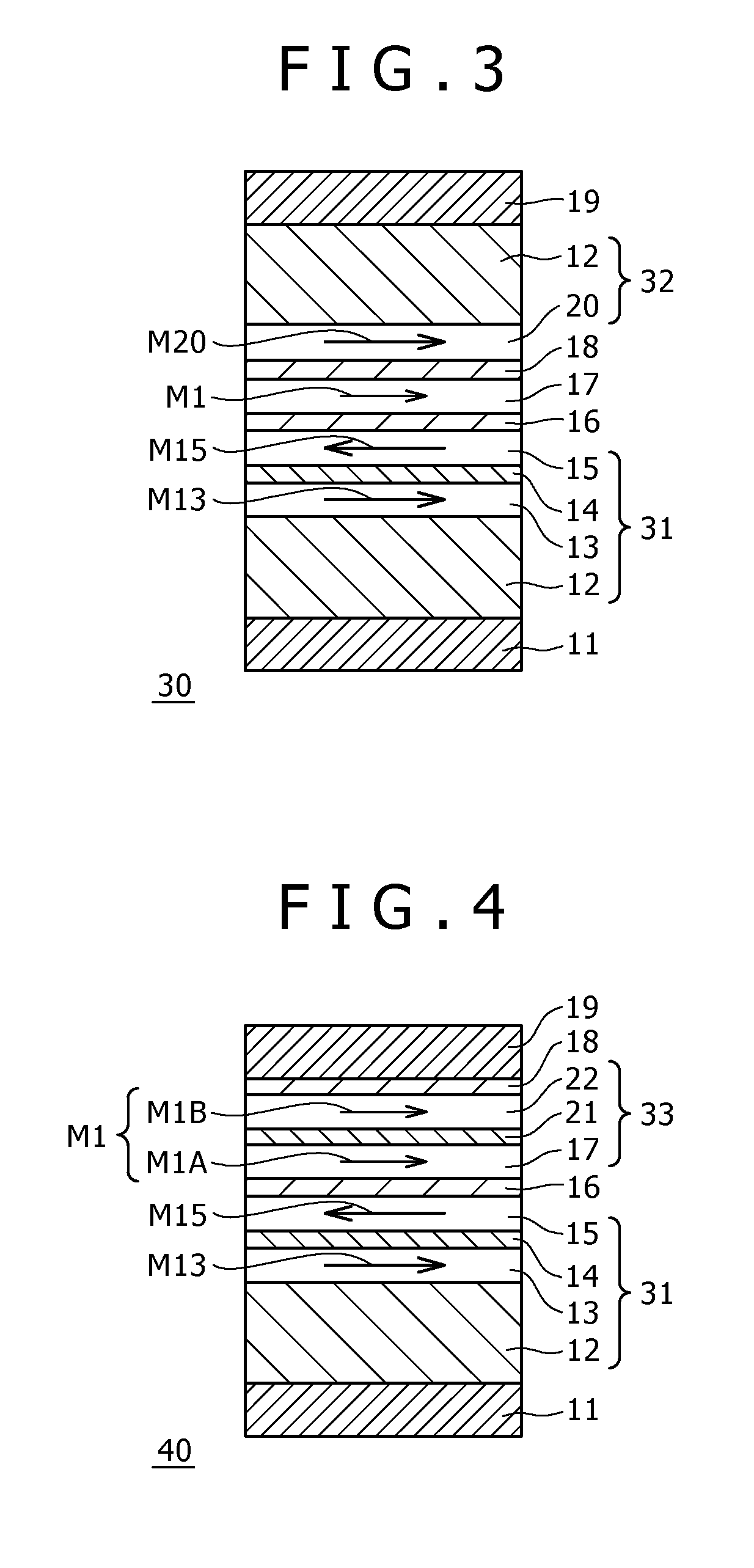Storage element and memory
a technology of storage elements and elements, applied in the field of storage elements and memory, can solve the problems of worsening the efficiency of spin injection, and achieve the effects of reducing the current needed for recording information, ensuring the stability of the current, and excellent characteristics of holding information
- Summary
- Abstract
- Description
- Claims
- Application Information
AI Technical Summary
Benefits of technology
Problems solved by technology
Method used
Image
Examples
experiment 1
Examples
[0296]A 2 μm-thick thermal oxide film was formed on a 0.575 mm-thick silicon substrate, and a storage element 40 configured as shown in FIG. 4 was formed thereon.
[0297]Specifically, in the storage element 40 configured as shown in FIG. 4, the material and film thickness of each layer were selected as follows. The under layer 11 was composed of a 3 nm-thick Ta film, the antiferromagnetic layer 12 was composed of a 30 nm-thick PtMn film, the ferromagnetic layer 13 for constituting the pinned magnetization layer 31 was composed of a 2.2 nm-thick CoFe film, the ferromagnetic layer 15 was composed of a 2 nm-thick CoFeB film, the non-magnetic layer 14 for constituting the pinned magnetization layer 31 of the laminate ferri structure was composed of a 0.8 nm-thick Ru film, the tunnel insulation layer 16 was composed of a 0.8 nm-thick MgO film, the ferromagnetic layers 17 and 22 for constituting the storage layer 33 were each composed of a 1 nm-thick CoFeB film, the non-magnetic lay...
experiment 2
[0341]A 300 nm-thick thermal oxide film was formed on a 0.725 mm-thick silicon substrate, and a storage element 3 configured as shown in FIG. 2 was formed thereon. Besides, in forming the spin barrier layer 18 of the storage element 3, the high-resistance layer 41 and the non-magnetic metallic layer 42 were laminated, as shown in FIG. 5.
[0342]Specifically, in the storage element 3 configured as shown in FIG. 2, the material and film thickness of each layer were selected as follows. The under layer 11 was composed of a 3 nm-thick Ta film, the antiferromagnetic layer 12 was composed of a 20 nm-thick PtMn film, the ferromagnetic layer 13 for constituting the pinned magnetization layer 31 was composed of a 2 nm-thick CoFe film, the ferromagnetic layer 15 was composed of a 2.5 nm-thick CoFeB film, the non-magnetic layer 14 for constituting the pinned magnetization layer 31 of the laminate ferri structure was composed of a 0.8 nm-thick Ru film, the tunnel insulation layer 16 was composed ...
experiment 3
[0355]Samples of storage element 3 were prepared in the same manner as the samples of storage element 3 in Experiment 2, except that the non-magnetic metallic layer 42 to be the spin barrier layer 18 in the storage element 3 configured as shown in FIG. 2 was composed of a 5 nm-thick Ta film.
[0356]Then, samples differing in the thickness of the magnesium oxide film of the high-resistance layer 41 to be the spin barrier layer 18 were prepared. Specifically, samples of storage element 3 were prepared while setting the thickness of the magnesium oxide film after sputtering to be 0.5 nm, 0.7 nm, 0.9 nm, 1.1 nm, and 1.3 nm, respectively.
PUM
 Login to View More
Login to View More Abstract
Description
Claims
Application Information
 Login to View More
Login to View More - R&D
- Intellectual Property
- Life Sciences
- Materials
- Tech Scout
- Unparalleled Data Quality
- Higher Quality Content
- 60% Fewer Hallucinations
Browse by: Latest US Patents, China's latest patents, Technical Efficacy Thesaurus, Application Domain, Technology Topic, Popular Technical Reports.
© 2025 PatSnap. All rights reserved.Legal|Privacy policy|Modern Slavery Act Transparency Statement|Sitemap|About US| Contact US: help@patsnap.com



